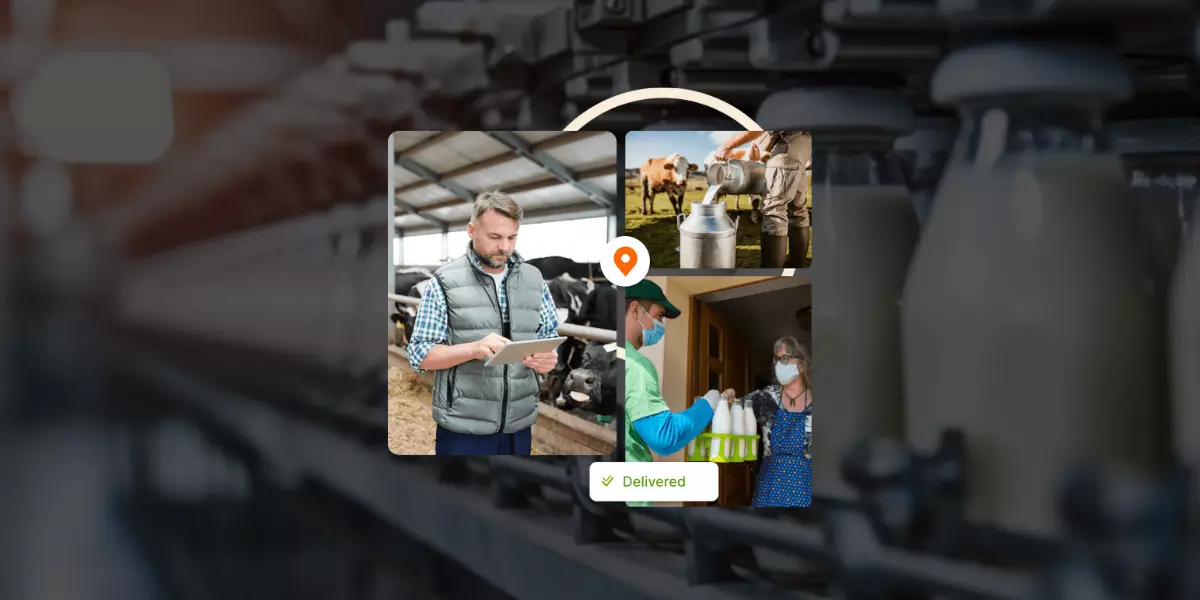
Optimizing Dairy Operations: Milk Delivery App Development
In the dairy industry, efficiency is key to success. From farm to consumer, every step of the process must be streamlined to ensure freshness, quality, and timely delivery of milk. Traditional methods of managing dairy operations can be time-consuming and prone to errors, leading to inefficiencies and increased costs. However, with the advent of technology, there's a new solution on the horizon: end-to-end milk delivery app development.
The Need for Efficiency in Dairy Operations
Dairy operations involve numerous tasks, including milk production, transportation, processing, and distribution. Each of these steps requires careful coordination to minimize waste, optimize resources, and meet consumer demands. However, manual management of these processes can be challenging, especially as dairy operations scale up.
Challenges Faced by Dairy Industry
- Logistics Management: Coordinating milk collection from multiple farms, transportation to processing facilities, and distribution to retailers or consumers can be complex and time-consuming.
- Inventory Management: Maintaining optimal inventory levels while minimizing wastage and ensuring freshness is a constant challenge for dairy businesses.
- Communication Issues: Miscommunication between stakeholders can lead to delays, errors, and inefficiencies in the dairy supply chain.
Also Read: Milk Delivery App Development: How to Guide
The Role of Milk Delivery App Development
Milk delivery app development offers a comprehensive solution to the challenges faced by the dairy industry. By leveraging the power of mobile technology and data analytics, these apps streamline dairy operations from start to finish, optimizing efficiency and improving overall productivity.
Key Features of Milk Delivery Apps
- Farm Management: Enable farmers to manage milk production schedules, track yields, and schedule pickups seamlessly.
- Route Optimization: Optimize milk transportation routes to minimize time and fuel consumption, reducing costs and carbon footprint.
- Real-Time Tracking: Provide real-time visibility into milk shipments, allowing stakeholders to track delivery status and anticipate any delays.
- Inventory Control: Implement inventory management features to track milk stock levels, monitor expiration dates, and reduce wastage.
- Automated Communication: Facilitate seamless communication between farmers, processors, distributors, and retailers through automated alerts, notifications, and updates.
Benefits of Milk Delivery App Development
1. Improved Efficiency
By automating and optimizing dairy operations, milk delivery apps significantly improve efficiency, reducing costs and increasing productivity.
2. Enhanced Traceability
Tracking capabilities enable stakeholders to trace the journey of milk from farm to consumer, ensuring transparency and accountability throughout the supply chain.
3. Reduced Costs
By minimizing wastage, optimizing routes, and streamlining processes, milk delivery apps help reduce operational costs and improve profitability for dairy businesses.
4. Better Customer Service
Real-time tracking and communication features empower dairy businesses to provide better customer service, enhancing customer satisfaction and loyalty.
Also Read: How to Develop a Milk Delivery App like Country Delight
Conclusion
Milk delivery app development has the potential to revolutionize the dairy industry by optimizing operations, reducing costs, and enhancing customer service. By leveraging technology to streamline processes and improve efficiency, dairy businesses can stay competitive in today's fast-paced market. Embracing this innovative solution will not only benefit individual dairy businesses but also contribute to the overall sustainability and growth of the dairy industry as a whole.